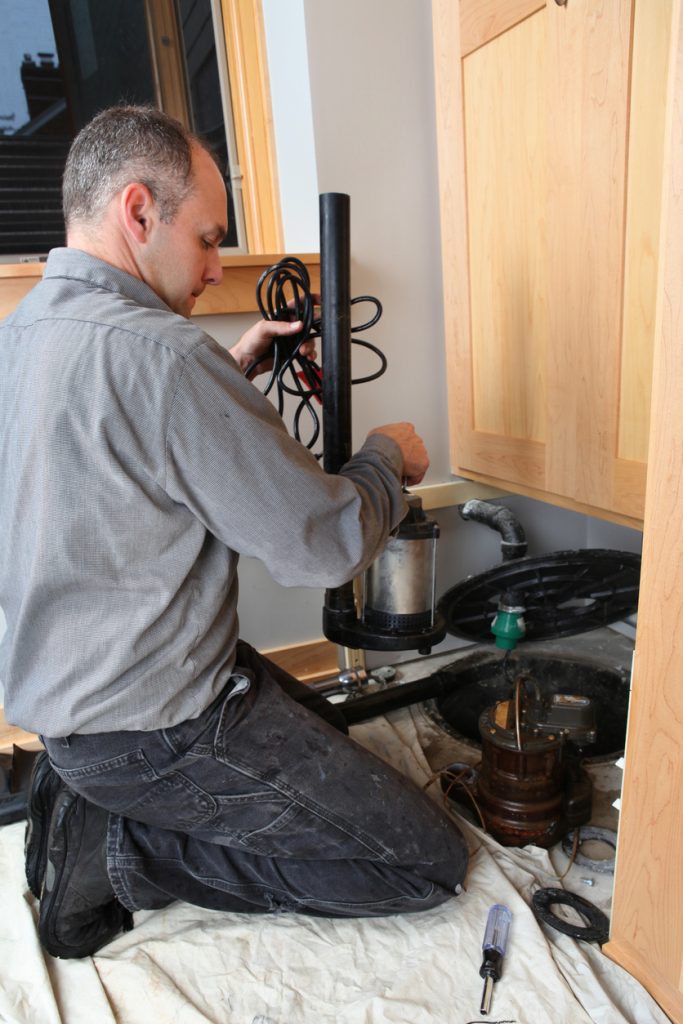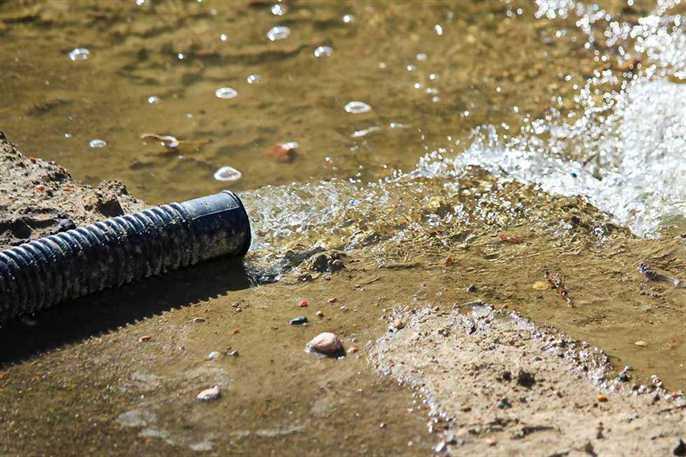Best Techniques for Taking Care of a Sump Pump
Best Techniques for Taking Care of a Sump Pump
Blog Article
Are you currently in search of information involving Keep Your Sump Pump Clean, It'll Keep You Dry?

Sump pumps are essential components in lots of homes, especially in locations vulnerable to flooding or too much dampness. They help avoid water damages by efficiently eliminating excess water from basements or crawl spaces. However, like any other appliance, sump pumps call for regular upkeep to guarantee they function efficiently when required the most. Cleaning your sump pump is an important part of its upkeep, and understanding just how to do it properly can conserve you from costly fixings and prospective catastrophes.
Introduction
Maintaining a tidy sump pump is important for its appropriate performance and longevity. Disregarding this crucial task can result in obstructions, breakdowns, and eventually, water damage to your home. As a result, finding out how to clean a sump pump is vital for house owners that rely upon these devices to maintain their basements completely dry and safeguarded.
Comprehending the Sump Pump
Prior to diving right into the cleaning process, it's necessary to have a fundamental understanding of just how a sump pump functions. Commonly set up in a pit or container listed below the cellar floor, a sump pump contains a number of essential elements, including a pump, a float switch, and a discharge pipeline. When water gathers in the pit, the float button activates the pump, which after that pumps the water out through the discharge pipeline, away from the building's structure.
Signs of a Dirty Sump Pump
Knowing when your sump pump needs cleansing is vital for protecting against potential malfunctions. Some typical signs that suggest a filthy sump pump consist of unusual noises throughout procedure, reduced water circulation, and visible particles in the pit. If you discover any one of these signs and symptoms, it's vital to cleanse your sump pump immediately to stay clear of any more problems.
Preparing for Cleaning
Prior to you begin cleaning your sump pump, it's vital to take some safety preventative measures. Begin by shutting down the power to the pump to stay clear of any kind of electrical accidents. Furthermore, wear proper protective gear, such as gloves and goggles, to secure on your own from dirt, debris, and possible pathogens.
Step-by-step Guide to Cleansing a Sump Pump
Shutting Off the Power
Begin by disconnecting the power supply to the sump pump to avoid any kind of mishaps while cleaning.
Eliminating Debris and Dust
Use a pail or a scoop to eliminate any type of visible particles, dust, or debris from the sump pit. Dispose of the debris appropriately to stop it from obstructing the pump or the discharge pipeline.
Cleansing the Pump and Float Change
As soon as the pit is clear of particles, thoroughly eliminate the pump from the pit. Inspect the pump and the float switch for any type of indications of damage or wear. Utilize a soft brush or towel to clean up the surfaces and eliminate any gathered grime.
Purging the System
After cleaning the pump and float switch, flush the sump pit with tidy water to eliminate any kind of staying dirt or debris. This will certainly help make certain that the pump operates efficiently and efficiently.
Checking for Proper Performance
Prior to re-installing the pump, execute a fast test to make certain that the float button turns on the pump appropriately. Pour some water right into the sump pit and observe the pump's procedure. If whatever is working appropriately, you can rebuild the pump and reconnect the power supply.
Upkeep Tips to Keep Your Sump Pump Clean
In addition to periodic cleansing, there are numerous upkeep suggestions you can comply with to maintain your sump pump in optimum problem:
Verdict
Cleaning your sump pump is a vital facet of its upkeep and ensures that it operates efficiently when you require it the most. By following the actions described in this guide and integrating normal upkeep into your regimen, you can prolong the lifespan of your sump pump and secure your home from water damage.
6 STEPS ON HOW TO CLEAN A SUMP PUMP PROPERLY
UNDERSTANDING SUMP PUMPS
Your sump pump plays a crucial role in protecting your home by managing and removing excess water. It primarily functions as a “shield”, guarding your basement against the damaging effects of water accumulation. The pump is housed in a sump pit in the lowest part of your basement, and its job is to pump out any water that collects there.
During heavy rainfalls or when snow melts rapidly, water can infiltrate your basement, posing potential risks like flooding, structural damage, and harmful mold growth. Here, the sump pump springs into action, pumping out the intruding water and directing it away from your home.
SAFETY FIRST
Before cleaning, remember to prioritize safety. Disconnect the sump pump from the power source to prevent any accidental electric shocks. Also, wear sturdy gloves to protect your hands from any sharp or dirty components within the pump.
REMOVE THE SUMP PUMP
After ensuring your safety, the next step is to remove the sump pump from its pit. Doing this might require careful maneuvering as you don’t want to damage any pump components. Once removed, clean the sump pit to remove any accumulated debris or sludge.
INSPECT THE PUMP
Inspect the pump for any visible signs of wear or damage. Check the power cord, float switch, and impeller housing. If any components look worn out or damaged, consider replacing them to ensure optimal performance.
CLEAN THE PUMP
Thoroughly clean the pump with warm, soapy water. Make sure to rid it of any dirt, gravel, or other debris that might impede its performance. You can use a toothbrush to clean the small, hard-to-reach parts of the pump.
REINSTALL THE SUMP PUMP
Reinstall the pump into the sump pit Make sure it’s positioned correctly to remove the water effectively Once it’s back in place, reconnect it to the power source TEST THE PUMP
Finally, pour some water into the pit to ensure the pump works correctly. It should start automatically and begin pumping out the water; if it doesn’t, check the power source and the positioning of the pump.
Remember, while cleaning your sump pump is an essential part of home maintenance, hiring a professional plumber for a thorough inspection and cleaning at least once a year is also important. This will ensure that your pump is in optimal condition, ready to protect your home from potential water damage.
BEST PRACTICES FOR CLEANING SUMP PUMP DISCHARGE PIPES
Regular Inspection: Regularly inspect your discharge pipes, especially during heavy rainfall or snowmelt periods. Look for any signs of blockage or damage. Early detection of problems can prevent serious issues down the line. Periodic Cleaning: Over time, sediment and debris can accumulate in the discharge pipes, impeding the flow of water. Regular cleaning helps keep the pipes clear and functioning efficiently. You can use a high-pressure water jet to effectively clean the pipes. Insulation During Winter: In colder climates, discharge pipes can freeze, blocking the outflow of water. Protect your discharge pipes from freezing temperatures by insulating them with foam pipe insulation. This will ensure the sump pump can continue to discharge water even in freezing conditions. Proper Positioning: The discharge pipe should be positioned to direct water away from your home’s foundation. Improper positioning can lead to water seeping back into the basement. Ensure the pipe is long enough and angled correctly. Installation of a Check Valve: A check valve prevents water from flowing back into your sump pit after the pump has pushed it out. Installing a check valve helps maintain the efficiency of your sump pump and reduces the risk of flooding. Minimize Pipe Turns: Every curve or turn in the discharge pipe can decrease the efficiency of water flow. By minimizing turns and bends in your discharge pipe, you can increase the efficiency of your sump pump. https://www.fullspeedplumbing.com/how-to-clean-a-sump-pump-properly9999/

I recently found that blog post on Cleaning & Maintenance Tips for Your Home's Sump Pump while browsing the search engines. Feel free to take the opportunity to share this content if you appreciated it. Thanks a lot for your time. Return soon.
Click For More Information Report this page